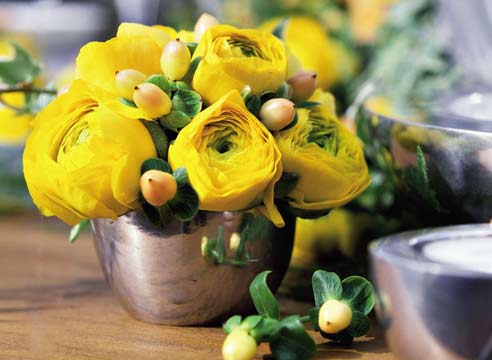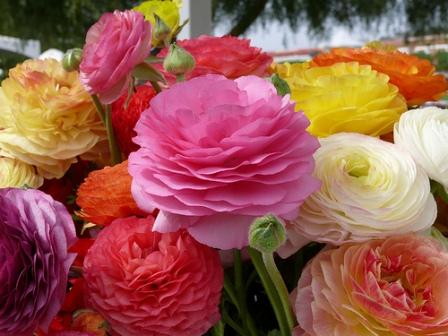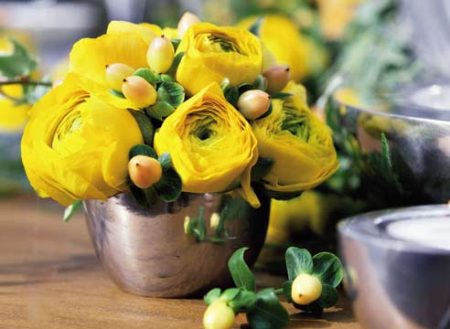 Today ranunculus is more and more gaining its love from flower growers. This charming plant has a second beautiful name as an Asian buttercup. Varieties of such a culture are quite diverse, both in form and in color. Buttercups with large double flowers are not rare, but smaller buds are not inferior in their charm.
Today ranunculus is more and more gaining its love from flower growers. This charming plant has a second beautiful name as an Asian buttercup. Varieties of such a culture are quite diverse, both in form and in color. Buttercups with large double flowers are not rare, but smaller buds are not inferior in their charm.
You can grow an Asian buttercup both in the open ground and at home on the windowsill. Not infrequently, these flowers admirably decorate bouquets or home decor. You can meet a charming plant on sale in late autumn, although many experts advise you to buy tubers of this culture in February or March.
Many people share this opinion of flower growers, because ranunculus tubers should be stored at a certain temperature, since deviation from proper storage often leads to unsuitability for further growth. In a word, it is not uncommon for gardeners who are trying to grow a given plant to be disappointed in its germination, and as it turns out in most cases, it is the improper storage of ranunculus tubers.
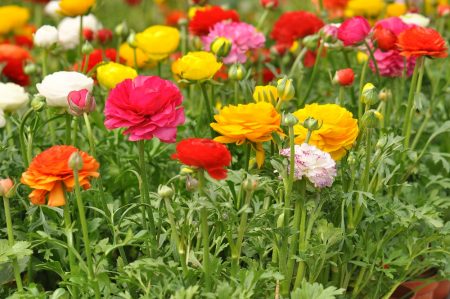
The average humidity and the correct storage temperature, which is usually 15-19 degrees, allows the plant to retain all its important properties for growth. In addition, when storing ranunculus tubers, they need proper care, which consists in turning them from one side to the other, this contributes to the normal access of oxygen, which is very important for such a plant.
Ranunculus: planting and care in the open ground, photo, allows you to consider in more detail what a beautiful plant is obtained from properly preserved tubers. After all, it is not uncommon for many gardeners to wait for long shoots of this plant. Therefore, it is additionally important to know that this culture loves peat rich soil. If chernozem is used, then it should be diluted with sand and humus in equal proportions.
When planting an Asian buttercup, many experts share their experience with confidence and say that this plant does not tolerate strong sunlight, but rather prefers penumbra. Access to the sun should be, but in a small amount, otherwise such beauty can upset its owners and die or not give proper flowering.
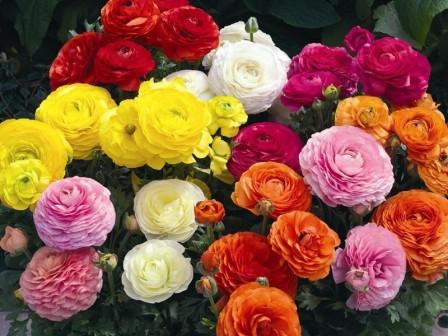
Ranunculus sprouts for several months, so it is better to plant in the month of April. Undoubtedly, the climatic conditions in each region are different, on the basis of which, it should be noted that in the presence of frosts tubers can die. Therefore, everyone chooses the most suitable time for landing individually.
This culture is not considered a capricious plant, but the necessary care still requires. In order to create flowering all the necessary conditions, tubers should be protected from freezing. Therefore, many experienced flower growers after planting in open ground cover this place with dry straw. Straw will also contribute to the retention of moisture, because it will hide the earth from sunlight, which means that the soil will not dry out quickly or erode. Based on what, it will not be necessary to water the plant so often, because, as you know, the spring sun is sometimes very hot.
It should be noted that the germination rate of the planting material of this plant is quite low, so beginner gardeners need to be extremely careful and attentive. After all, inappropriate conditions for the plant will quickly lead to its death.
When collecting planting material, it is best to wrap the flower in gauze.Because the seeds of this plant are quite small, and it is easy to crumble to the ground, where it is then difficult to collect them. After harvesting, the seeds are stored in a dry place at a temperature of 20 degrees. This nuance is considered important for the further germination of ranunculus tubers.
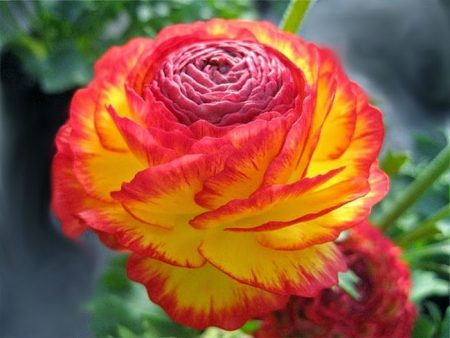
Then in February you can prepare a suitable soil for sowing seeds. For further convenience in caring for the plant, garden boxes are better suited, as they are easy to sow, because it is difficult to evenly distribute the seeds. Moreover, many experienced gardeners often use a special phyto-lamp, which is sent to the glass closing the boxes.
Then in April you can peek flowers and, in the absence of frost, plant them in open ground. As already described above, while covering the place of planting with straw. This approach will well protect plants from possible changes in temperature conditions. After that, leaving for this culture becomes less severe and does not require any special efforts.
Watering should be done every three days, but here again, you should pay attention to how the soil is moistened. Ranunculus does not like to be in moist soil. Excess moisture can be seen on the leaves of the plant, they acquire a white coating. Such a plaque indicates excess moisture at the roots of the plant. Then watering should be stopped, otherwise the roots may simply rot in the damp earth and the plant will die.
It is not uncommon that with excess fluid, a plant can begin to throw off its buds. But, it should be noted that this plant also does not tolerate drying out of the soil. If this happens, then the leaves become covered with red spots or yellow plaque. If the buds did not open completely and wilted and fell away, this also indicates that the soil is drying out.
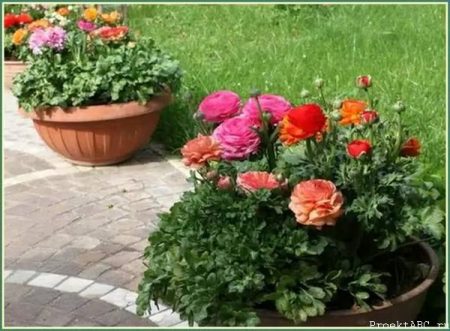
After watering, the next day, when the earth has dried up, loosening the soil should be carried out, this approach will ensure the normal passage of oxygen to the roots. Also, weeds must be removed during time, because it is they that can lead to the death of the plant, as they violate the root system by their presence.
Ranunculus is one of the cultures that requires a reverent attitude towards itself, so many believe that this is a capricious plant and causes a lot of trouble, because of which they do not want to engage and grow this culture. However, with correctly observed rules for leaving this plant, everything seems not so complicated and even vice versa, and the result which, it turns out, gives a lot of satisfaction and pleasure.
And how to grow and care for such a flower as an aster, we read in our article here.

